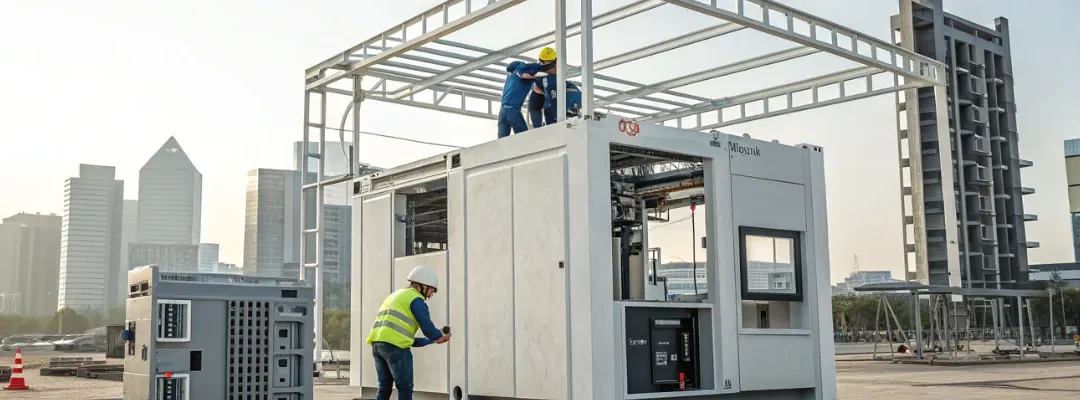A New Era of Construction
From prototyping to prosthetics, 3D printing has made headlines in nearly every industry. But one of its most groundbreaking applications is in the world of construction. With the ability to build faster, reduce waste, and cut costs, 3D printing in construction is no longer science fiction—it’s already transforming how we build homes, offices, and infrastructure.
What is 3D Printing in Construction?
3D printing in construction refers to the automated process of fabricating building components layer by layer using a specialized printer and material such as concrete, polymer, or composite blends. Also known as additive manufacturing, it allows structures to be built with precision and minimal human intervention.
Key Technologies Used in 3D Construction
1. Concrete 3D Printing
The most common method. It extrudes concrete through a robotic arm to create walls, frames, and even entire buildings.
2. Contour Crafting
Uses a robotic arm to create smooth surfaces and detailed elements quickly—ideal for housing.
3. Binder Jetting
Layers powder material and fuses it with a binding agent—less common but used for intricate components.
Benefits of 3D Printing in Construction
| Benefit | Impact |
|---|---|
| Speed | Projects completed in days vs. weeks/months |
| Cost Reduction | 30–60% savings on labor and materials |
| Design Flexibility | Build complex geometries with ease |
| Less Waste | Only the needed material is used |
| Sustainability | Lower carbon footprint and energy use |
| Labor Efficiency | Less reliance on manual labor |
Real-World Applications
Affordable Housing
NGOs and startups are using 3D printing to build low-cost homes in less than 48 hours.
Disaster Relief
Rapid deployment of printed shelters in earthquake- or flood-affected zones.
Military & Remote Sites
3D printing structures in extreme or remote environments where transporting labor is impractical.
Architectural Innovation
Curved walls, organic shapes, and intricate facades once deemed too expensive are now possible.
Examples of 3D Printed Buildings
- ICON + New Story (USA/Mexico): Affordable 3D printed homes for underprivileged communities.
- Dubai Municipality Office: World’s largest 3D-printed structure (6,900 sq. ft.).
- Apis Cor (Russia): Printed a fully livable house in 24 hours at –35°C.
Challenges & Limitations
Despite its promise, 3D printing in construction is still evolving.
- Material Constraints: Mostly limited to concrete and similar compounds.
- Regulatory Approval: Building codes in many countries don’t yet support this method.
- Skilled Workforce: Requires expertise in CAD, robotics, and material science.
- Scale Issues: Still not widely adopted for multi-story buildings.
The Future of 3D Printing in Construction
Emerging Trends:
- Multi-material printers for hybrid structures
- Robotic arm + drone systems for high-rise construction
- 3D printing with recycled materials for sustainability
- Integration with BIM (Building Information Modeling) for real-time project updates
Sustainability Angle:
By reducing material waste and emissions, 3D printing aligns perfectly with green building goals and carbon-neutral construction initiatives.
Frequently Asked Questions (FAQs)
Q: How much does it cost to 3D print a house?
A: Depending on location and design, it can cost between ₹10–25 lakhs ($12,000–$30,000), significantly cheaper than traditional methods.
Q: Is 3D printing construction legal in India?
A: It’s emerging. The first 3D printed house in India (IIT Madras + Tvasta) was approved for low-income housing. Wider policy support is in progress.
Q: Can 3D printers build multi-story buildings?
A: Not yet at scale. Most current applications are for single-story structures.

